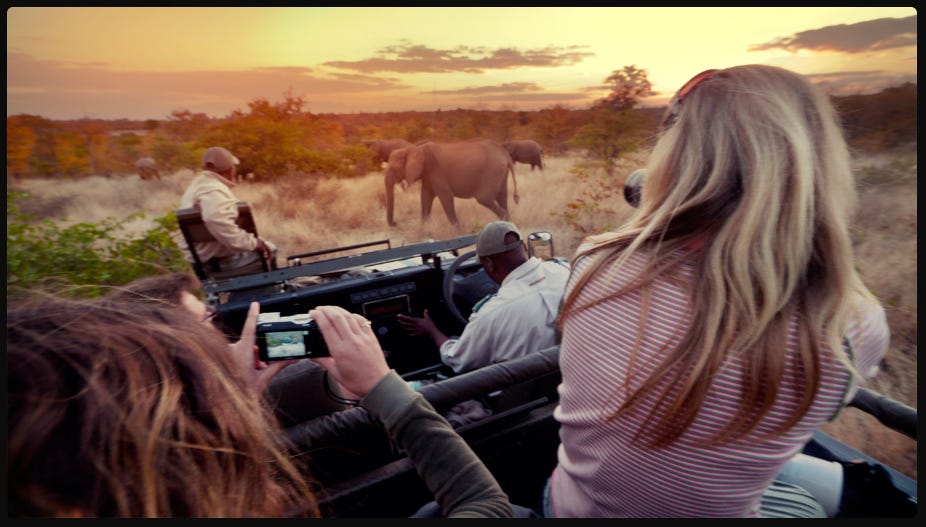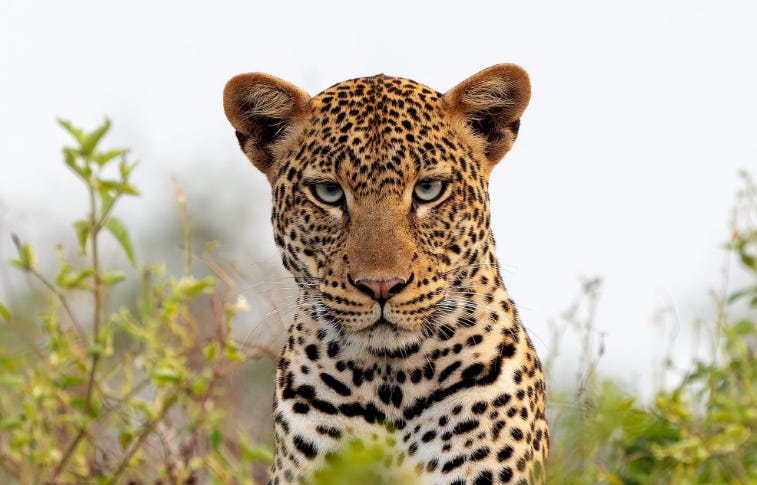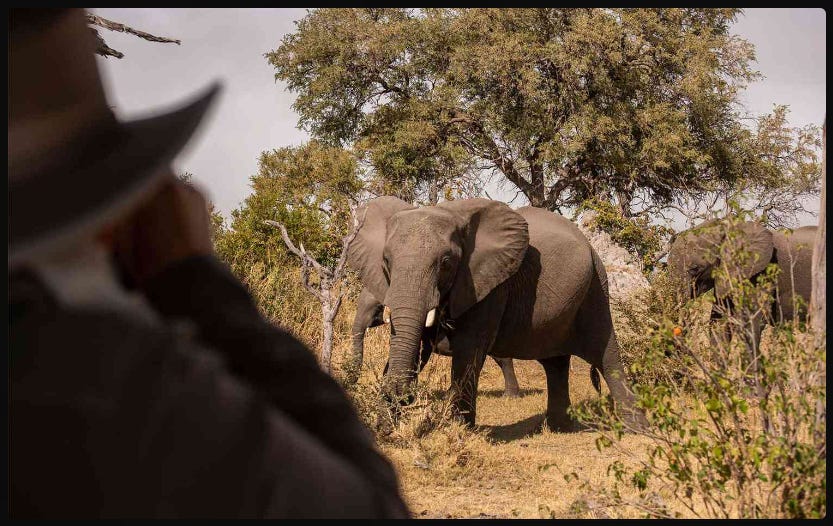Capturing stunning wildlife photos on safari requires the right gear.
Whether you're a beginner or a pro, this guide will help you choose the perfect camera and lens setup to document your African adventure.
💡According to a 2023 survey by Safari Bookings, 87% of safari-goers consider photography a key part of their experience.

We'll cover top camera picks for every skill level, essential safari photography tips, lens considerations, post-processing techniques, and common challenges you might face.
By the end of this guide, you'll be well-equipped to bring home images that rival those of professional wildlife photographers.
Top Safari Camera Picks for Every Skill Level
Entry-Level: Nikon D3500 DSLR
For safari beginners, the Nikon D3500 offers an excellent balance of image quality, ease of use, and affordability.
Key features include:
24.2MP sensor for crisp, detailed images
Lightweight body ideal for travel
Simple controls perfect for novice photographers
Pair with the Nikon 55-300mm f/4.5-5.6G VR lens for versatile zoom range
This lens offers a good balance of reach and portability for beginners. The Vibration Reduction (VR) feature helps compensate for camera shake
Wildlife photographer Paul Nicklen recommends: "For beginners, the Nikon D3500 is an excellent choice. Its intuitive controls allow you to focus on composition and timing rather than fiddling with settings."
💡For more on choosing the right camera for beginners, check out my guide on beginner photography cameras.
Enthusiast: Canon EOS 90D DSLR
The Canon EOS 90D is a powerful mid-range option for more serious photographers.
Highlights include:
32.5MP APS-C sensor captures incredible detail
Fast 10 fps continuous shooting for action shots
Weather-sealed body stands up to dusty conditions
Excellent companion to the Canon EF 100-400mm f/4.5-5.6L IS II USM lens
A study by DxOMark found that the Canon EOS 90D outperforms 85% of APS-C cameras in low-light conditions, making it ideal for dawn and dusk wildlife encounters.
Professional: Nikon D850 DSLR
For uncompromising image quality, the full-frame Nikon D850 is hard to beat.

Key specs:
45.7MP sensor delivers stunning resolution and dynamic range
Robust build quality for demanding safari conditions
Advanced autofocus system tracks moving wildlife
Pair with the Nikon 200-500mm f/5.6E ED VR for ultimate reach
National Geographic photographer Steve Winter states: "The Nikon D850's combination of resolution and speed makes it my go-to camera for wildlife work. Its ability to capture fine details in challenging light is unparalleled."
Essential Safari Photography Tips
Master your camera's settings before the trip
Use fast shutter speeds (1/1000s+) to freeze action
Shoot during golden hour for magical lighting
Learn animal behavior to anticipate great shots
Experiment with different perspectives and compositions

Additional Safari-Specific Tips
Use burst mode to capture fleeting moments of animal behavior
Embrace the dust and incorporate it into your shots for atmospheric effects
Always be ready - keep your camera out and lens cap off
Respect wildlife and maintain a safe distance - use a longer lens instead of getting too close
Pack extra memory cards and batteries - you'll take more photos than you expect!
Research by the African Wildlife Foundation shows that understanding animal behavior can increase your chances of capturing unique moments by up to 60%.
💡For more in-depth tips on wildlife photography, check out my other guide on whale-watching photography.
Lens Considerations for Safari Photography
Choosing the right lens is crucial for capturing stunning wildlife images on safari. Here are key factors to consider:
Factors to Consider When Choosing a Lens
Weight: Safari often involves long days in vehicles or on foot. A lighter lens can prevent fatigue and make handling easier.
Versatility: A lens with a wide zoom range allows you to capture both close-ups and wider scenes without changing lenses.
Weather Sealing: Safaris can be dusty and occasionally wet. Weather-sealed lenses protect against environmental damage.
Image Stabilization: This feature helps maintain sharpness, especially in low light or when using longer focal lengths.
Importance of Focal Length Range
Different focal lengths suit various wildlife scenarios:
200-400mm: Ideal for larger animals and closer encounters
400-600mm: Perfect for most wildlife situations, offering a good balance of reach and manageability
600mm+: Excellent for distant or smaller subjects, but can be challenging to handle
Prime vs. Zoom Lenses for Safari
Prime Lenses:
Pros: Superior image quality, wider apertures for low-light shooting
Cons: Less versatile, require changing lenses more frequently
Zoom Lenses:
Pros: Versatile, allows quick composition changes without switching lenses
Cons: Generally heavier, may have smaller maximum apertures
For most safari photographers, a high-quality zoom lens like the 100-400mm or 200-500mm offers the best balance of versatility and image quality.
💡If you're interested in exploring more specialized lenses, take a look at my guide on the best fisheye lenses for photographers.
Tips for Protecting Lenses in Dusty Conditions
Use a UV filter to protect the front element
Keep lens caps on when not shooting
Use a lens hood to minimize dust on the front element
Carry a blower and microfiber cloth for quick cleaning
Avoid changing lenses in dusty environments when possible
💡See my camera gear storage and protection tips for more advice on keeping your equipment safe.
Additional Specialized Lenses
While a versatile zoom is often sufficient, consider these specialized options:
Super-telephoto Prime Lenses (e.g., 600mm f/4):
Ideal for distant subjects or bird photography
Offers superior image quality and low-light performance
Challenges: Heavy, expensive, less versatile
Wide-angle Lenses (e.g., 16-35mm):
Perfect for landscape shots and environmental portraits
Captures the vastness of African scenery
Great for close-up shots of larger animals like elephants
Macro Lenses:
Allows close-up shots of small wildlife, insects, and plants
Adds variety to your safari portfolio
Consider a longer focal length (e.g., 100mm) for a comfortable working distance
The best lens is one that you're comfortable using and fits your shooting style.
For most safari situations, a high-quality telephoto zoom lens will cover the majority of your needs.
Post-Processing Techniques for Safari Photos
After your safari, bring your images to life with these post-processing tips:
Adjust the white balance to correct for the warm tones of African landscapes
Use selective sharpening to enhance animal features, especially eyes
Reduce noise in shadow areas, common in early morning/late evening shots
Apply subtle vignetting to draw focus to your subject
Experiment with black-and-white conversions for dramatic portraits
💡My guide on editing tips with Adobe Lightroom can help you master these techniques.
Common Challenges in Safari Photography and How to Overcome Them
Harsh midday light: Use fill flash or wait for better lighting conditions
Distant subjects: Invest in a longer lens or use a teleconverter
Shooting from a vehicle: Use a bean bag or window mount for stability
Fast-moving animals: Pre-focus on a spot and wait for the animal to enter the frame
Cluttered backgrounds: Use a wide aperture to blur the background and isolate your subject
💡For more tips on capturing great shots in challenging light conditions, check out my low light photography tips.
A Safari Photographer's Tale
Wildlife photographer Jane Smith recalls her first safari experience:
"On my first morning in Kruger National Park, I was filled with excitement and nerves.
As our jeep rumbled through the savanna, I spotted a lioness in the distance.
My hands shook as I raised my camera, but I remembered to breathe and adjust my settings. Just as I framed the shot, the lioness turned and looked directly at me.
That moment, captured in a single frame, still gives me goosebumps. It taught me that patience and preparedness are key in safari photography."
And That’s It
Choosing the right camera and lens combo is key for capturing unforgettable safari moments.
Whether you opt for an entry-level DSLR or professional-grade gear, these recommendations will help you bring home stunning wildlife images.
Remember to practice with your equipment before the trip and always prioritize the experience over getting the "perfect" shot.
💡For more inspiration, check out my guide on travel photography tips.
Also, check out the Wildlife Photographer of the Year competition gallery that showcases some of the world's best wildlife images.
I hope that helps,
Hakan.



